March in the Loft—Care and Feeding of the Racing Pigeon Squab
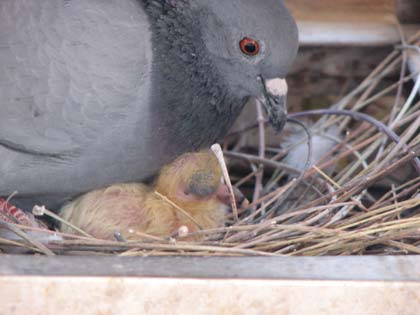 In March breeders in the U.S. can finally reap the rewards of all of their hard work during the breeding season and that is babies hatching. The initial care and feeding of the pigeon squab sets the stage for the future success of your racing pigeon. Helping your pigeon hatchling develop into a strong and healthy racer begins at birth. To give your pigeons the best start and a great advantage in future competition, tap into the expertise of Professor P. De Backer, a well- respected pigeon veterinarian-pharmacologist associated with the University of Ghent in Belgium, who has made invaluable contributions to our current standards for raising healthy racing pigeons. The recommendations that follow are based upon the research of Professor De Backer.
In March breeders in the U.S. can finally reap the rewards of all of their hard work during the breeding season and that is babies hatching. The initial care and feeding of the pigeon squab sets the stage for the future success of your racing pigeon. Helping your pigeon hatchling develop into a strong and healthy racer begins at birth. To give your pigeons the best start and a great advantage in future competition, tap into the expertise of Professor P. De Backer, a well- respected pigeon veterinarian-pharmacologist associated with the University of Ghent in Belgium, who has made invaluable contributions to our current standards for raising healthy racing pigeons. The recommendations that follow are based upon the research of Professor De Backer.
Weaning the Pigeon Squab
Once the pigeon hatchling has progressed through the squeaker, or peeper stage, and has learned how to eat, it is time for weaning. At this point, the squab will be about 25 or 26 days old. Weaning at this age reduces the stress on the parent birds, allowing them sufficient recovery time to produce and raise three and even up to four rounds of hatchlings.
Nutritional preparation for weaning the young pigeon includes supplementation to promote the future flyer’s appetite and digestive function. If the bird has a good appetite with efficient food digestion, then it can reach an optimal nutritional state for healthy growth and development. A good dietary supplement to give is Oropharma’s Ideal Pill, a completely natural supplement comprised of plants and herbs. The recommended dose for the Ideal Pill is one every other day beginning at age 5-6 days. You will continue the Ideal Pill throughout the weaning.
Disease Prevention during Weaning
Weaning is a stressful time for the pigeon squab, leaving him susceptible to parasitic disease. Simple steps that you, the fancier, can take will assist your bird in staying healthy. These steps include parasite prevention and bedding.
First, the bedding: be sure to provide adequate bedding as the weaning squabs will spend most of their time on the loft floor, cuddling together for warmth and survival. Good bedding materials include straw for warmth and tobacco stems or pine needles for their anti-parasitic quality. Keep the bedding clean and dry.
The second measure you need to take to prevent parasitic disease is a 57% Malthion and warm water dip. When you take the young bird from its parents, dip it into a mild solution of the Malthion and warm water. The Malthion solution will work for months in repelling external parasites.
After the dip, place the bird on the fresh, dry bedding where it will cuddle with its loft mates and be dry within the hour. The use of the warm water in the dip will also help to calm the young squab during this initial separation from its parents.
Canker prevention should be initiated about 14 days post-separation. All of the loft babies should be treated. The recommendation for treatment is to feed Ridzol-S or Turbosole, manufactured by the Australian Pigeon Company, at a dose of one and one-half teaspoons per liter of water for three to five days.
Loft Ventilation Necessary for Disease Prevention
Adequate and draft-free ventilation of the loft is so important that it deserves its own section here. Fresh air is probably the number one disease prevention measure a fancier can take. Without fresh air, the loft atmosphere can quickly become contaminated with ammonia and CO2. This contaminated air will sicken your birds to the point of death.
Proper ventilation begins at the loft roof. This will allow the escape of warm, contaminated air out of the loft as it replaced from below by fresh, cooler air coming in through vents placed at the bottom of a loft wall. For the best ventilation, the upper and lower vents should be located on the same wall. Adjustable venting is necessary for loft climate control. For reliable venting and temperature control, consider using ventilators controlled by a thermostat.
Nutrition for the First 14 Days of Weaning
For the first 14 days of weaning, provide the squab with the same feeds as the parent birds were eating. This should be a commercial breeding mix with or without added corn. Feed the young pigeons a light ration and sparingly, especially in the evening. Control eating by removing the feed after allowing 15 to 20 minutes of feeding time.
Provide adequate fresh water to the squab at all times. Be sure to allow a sufficient number of floor drinkers for the size of the loft. For example, a 5’ x 9’ loft could accommodate 3 one-liter drinkers. Keep the drinkers clean and the water fresh.
Watch for any non-drinkers. If you see birds that tend to stay in the corners of the loft or who are constantly squinting their eyes, those are probably your non-drinkers. You can easily train them to drink by taking them to the drinker and gently lowering their head, dipping their beak in the water. This should start the bird to drink eagerly. Once the bird has that first drink, he will remember where the water is.
Nutrition after the First 14 Days
After the first 14 days of weaning, switch the feed to a standard young bird mix consisting of about 14-16% protein. Continue the Ideal Pill, also.
Additional dietary supplements should be introduced during the weaning phase and continued for proper growth and development. These supplements will not only build stronger, more robust pigeons but will also aid in development of the birds’ brains. Healthy brain development is essential because pigeons need the ability to think quickly in order to orient themselves in flight. And, finally, the correct dietary supplements play a huge role in the prevention of diseases.
Dietary supplements recommended include:
- Grit, such as picking stones, seaweed grit (which also supplies natural iodine)
- Calcium
- Minerals and trace elements
- Herbal supplements, such as Naturaline from the Natural Company or Orovital from Oropharma
- Probiotics
Probiotics increase the pigeon squab’s natural resistance to disease by promoting the growth of the beneficial bacteria in the gut. These “good” bacteria will fight any disease-causing bacteria the bird may ingest. Recommended probiotics are Health Gard, Digestal from Versele-Laga, Prodigest from Herbots and Cometose made by Comed.
Training During the Weaning Stage
Begin training as soon as the squab is weaned. The first training involves teaching the young pigeons to listen. Use the time of feeding as the time to train by calling to the birds. Methods for calling that you can use include talking to the birds, whistling with a whistle or mouth whistling or shaking a tin of feed. Be consistent in the calling method you use and use it at every feeding. Birds are social in nature. Teaching your birds to listen to you will create the bond of understanding that is vital to successful flight.
Support through the First Moult
A proper moult is necessary for the future racing career of the now young squab. During the moult, the shedding of the feathers is greatly influenced by the bird’s surroundings. There are some environmental adaptations the fancier can take to promote proper moulting. The primary measure involves loft darkening.
Loft darkening should start immediately upon weaning the young birds. This will help slow down the moult. Darkening is accomplished by covering the loft windows with covers or drapes. Try to get the loft as dark as possible. You may need to add extra ventilation in the darkened room.
Loft darkening should be scheduled to allow no more than 10 hours of light time. It is usually done from 6 p.m. to 8 a.m. but the times can be adjusted to accommodate your work schedule.
Other benefits noted when loft darkening is instituted is that the birds tend to mature faster. They are also more inclined to respond to the mating urge. On a cautionary note, plan on allowing time for the bird to re-acclimate itself after spending time in the darkened loft prior to letting them out to fly. Otherwise, there is a noted increase in the number of fly-aways.
First Training Tosses
Flight training should begin as soon as the pigeon squabs reach the fledgling stage and begin to “route” or “trip” from the loft. Start with getting the fledglings comfortable with the training baskets. Acclimating to the training basket reduces any stress the birds may have when you take them on the training toss. By leaving the baskets in the loft and allowing the birds to enter the basket to eat and drink, the birds easily become used to the basket.
Remember that these first tosses are for training purposes; they are not marathons, so they should be short. Short tosses will allow the fledglings to mature into the game and will help to prevent potentially disastrous results. Many short tosses in training will have your pigeons racing home. Once the birds are confident in the short tosses, you can merge into small group or single tosses.
A couple of things to remember in training your fledglings— hungry and fit birds will return home faster and returning home will rapidly become a habit. Also, the homing instinct is hereditary; the individual bird may or may not have inherited that instinct.

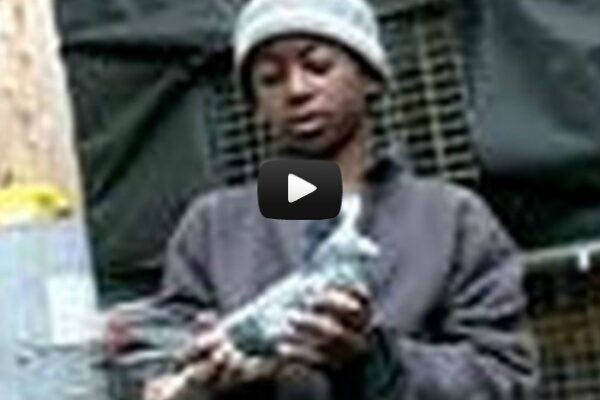
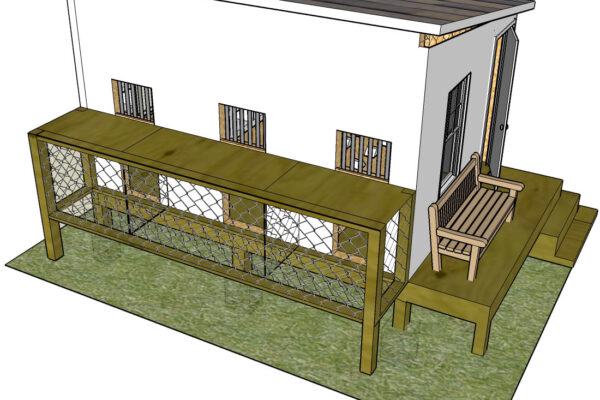

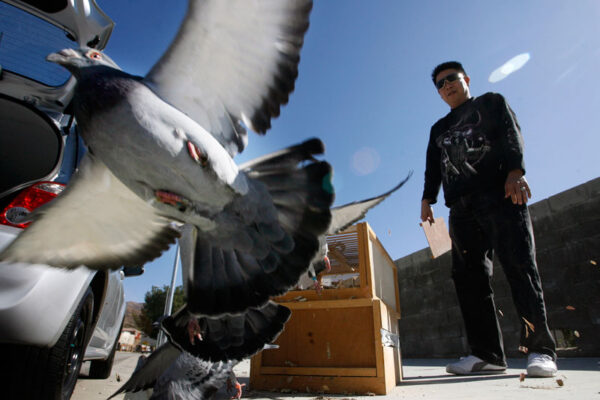
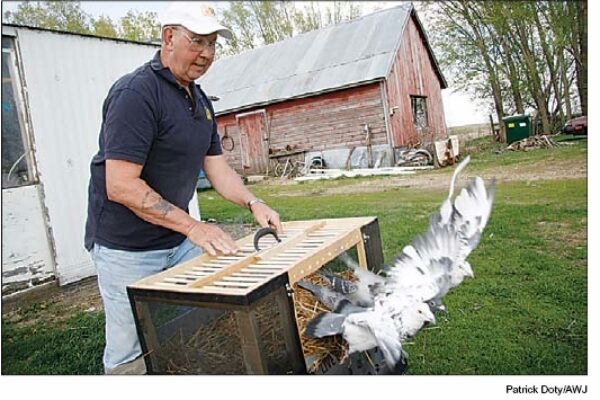


sir,
again, thanks for the info that you sent me. timely as it is again for i am now in the process of
starting my breeding.
ronald
hi sir chris thanks for the nice post.. this is great post ang verry informative.god bless you
Chris a lot of what is said goes against other posts ie, natural feeds and supplements. I’d have no money for racing if i treated all the young as above. Mine seem very health and I only give them apple cider vinegar, a drop in the water every few days. 40 years ago I gave my pigeons nothing but good feed and clean water and i never had a problem, so i think I’ll stay with it.
In Europe, more and more fanciers are against the darkening of the loft in young pigeons. There is a better way: The light method – up into March around the clock, then at least 12 hours a day – promoting the molt. The birds are then at the races already in their second feathers.
sorry for my bad english
Cedar chips are bad for you and the birds. Causes respiratory irritation. Use pine chips in baskets. Bare floor scraped regularly is best. Remove droppings often. They give off ammonia that causes respiratory irritation as well. Buy a good probiotic, such as probios, primilac. Yogurt is ok for you, but not so good to the birds.
maybe i have to read more to learn more how to win the race. thank you because i learn some idea how to make my pigeon strong in race time
I never thought about yogurt sounds like a great idea. I red an artical from Cornell Univercity, rape seed is bad for the birds actualy they used the word poison. They have a lot more money to do testing than I so I stoped using it 2 yrs ago.
Dave
ON THE CORN FOR THE BREEDING PAIRS,I ADD RAPE, LINSEED,HEMP, OIL, SPICKELD WITH SMG GOLD BABY POWDER, ON THE LOFT FLOOR I USE A PRODUCT THEY CALL ELEPHANT GRASS OVER HEAR IN ENGLAND.
very interesting,myself like pigeon john use a organic live yogurt on the youngbirds feed, it’s full of natural probiotic the birds love it & it’s a lot cheaper than shelf bought specifics.I prefer to use woodchips & tobacco sticks myself, but what a good idea of david’s to use pine needles. enjoy your birds mike.
Ceader chips can irritate the skin and cause resperatory problems. I use pine needles, they are free and abundent.
Dave
I heard the same thing.I use pine shaving in my crates.
terry
I like to use ceader chips for litter in my young bird loft! Do you think this could hurt? The ceader gives the birds warmth on the floor brfor they can fly “I belive”
I wouldn’t use them, it’s my understanding they are bad for our birds.
terry